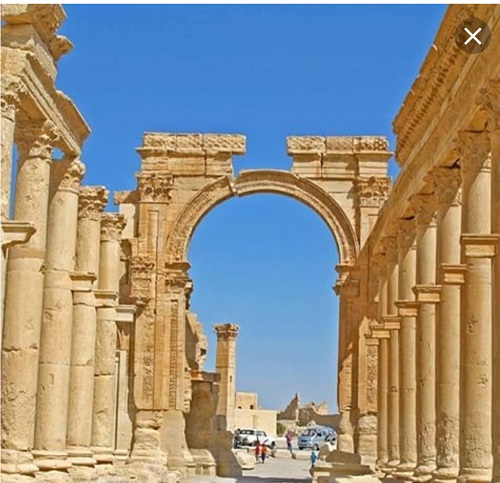Homs, (ST) – The city of Homs embraces about five thousand archaeological sites that were the result of dozens of civilizations that followed the region to give it the qualities of diversity and wealth.
Just like many of the Syrian provinces, Homs the central province, enjoys a wide natural, cultural and archeological diversity as it contains about five thousand archaeological sites.
The archaeological sites in Homs, according to Eng. Ahmed Akash, director of tourism bureau in the province, represent thirty-three successive civilizations, indicating that these sites include markets, khans, traditional handicrafts shops and ancient homes that represent unique tourist destinations that will help to achieve economic and cultural revival, stressing the importance of restoring sites threatened by the risk of deterioration and paying more interest for providing tourism services in these sites.
Eng. Akash noted that Homs is rich with great archaeological sites, monuments and cities , such as Palmyra, Krak des Chevaliers,(Al-Hosn Citadel), al-Hayr al-Sharqi Palace, Umm al-Zennar Church, Khalid Ibn al-Walid Mosque, Tal al-Mishirfa , Saint George Monastery or Deir Mar Georges and the Church of Saint Elian al- Homsi, in addition to many ancient markets and gates which makes Homs the first tourist destination in Syria, particularly after restoring security and stability to most of its areas.
Al-Hosn Citadel, (Krak des Chevaliers), gains a unique importance as it was classified, according to UNESCO as one of the World Heritage Sites since 2006. It enjoys a unique architectural style, in addition to its location as it is surrounded by a charming natural scene.
Palmyra City is also one of the archaeological sites which have been recognized by UNESCO as World Heritage Sites, but 16 years before Al-Hosn Citadel. Developing the city’s infrastructure and facilities such as restaurants and hotels to provide the necessary services helped to reactivate tourism in the province. There is also an idea to renovate Zanobia Hotel, one of the oldest hotels in Palmyra which was built between 1918 and 1920. As well as, rehabilitating Afqa spring, which was historically believed to be the source of prosperity and the continuity of life in Palmyra City more than 6,000 years ago, as it has returned to life and started to flow again after about 25 years of dryness. It will revive the therapeutic tourism for healing, especially of dermatological, intestinal and articular diseases. It can also be included in the Tourism Ministry’s investment programs as an economic resource and social revenue for employment in Palmyra.
Amal Farhat

